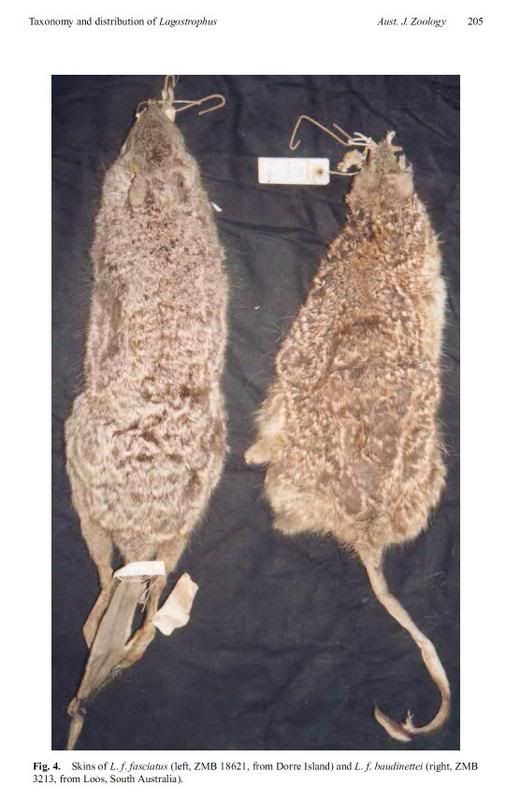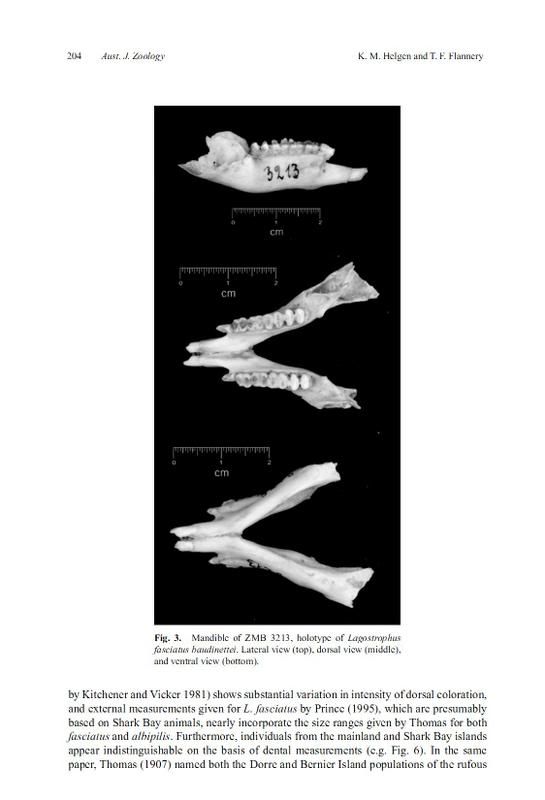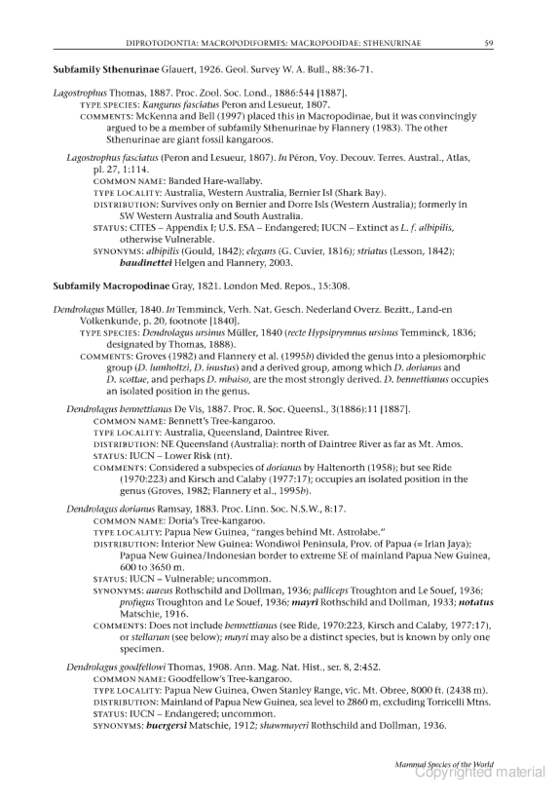Post by sebbe67 on Feb 7, 2007 19:15:54 GMT
Only described in 2003.
It differ from Lagostrophus f. fasciatus in its more strongly rufous colouration, less pronounced dorsal banding pattern, more elaborate cuadal hair-crest and a shorter tail.
There is plenty of holocene subfossils of Lagostrophus fasciatus in South Australia but only one skin, collected from this region, have been distinguished so far and could be the only complete specimen from this regíon.
Mr Schomburgk (who reside in South Australia 1850-1865) collected one specimen from Buchsfelde (40km north of Adelaide), South Australia in 1863. Close to his family settlement.
In his archeived correspondence Mr Schomburgk noted that banded hare-wallaby had become extremely rare in the area, and he was only able to obtain one specimen. Lagostrophus f. baudinettei may have become extinct soon after the holotype was collected, as there are no other live-caught specimens in museum collections.
In addition to the holotype Lagostrophus f. baudinettei is known historically by several mid-nineteenth century sight records. Stuart (1849) oberved that it once was "very common on the plains north of Gawler Town" (near the type locality of Lagostrophus f. baudinettei) and Gould (1863) recorded that a Mr Eyre, states that he frequently oberved it in the Murray Scrub of South Australia. Tunbridge (1991) additionally suggest that an unidentified wallaby oberved by Bruce (1902) in 1858-59 at Arkaba in the Flinders Range was possibly Lagostrophus fasciatus.
Quaternary subfossils extend the known recent distribution of Lagostrophus f. baudinettei from the lower Murray River Valley south-east to Narracoorte and north-west to the vicinity of Ceduna. Balme (1995) additionally recorded Lagostrophus from one holocene site (9000t to 5000 years ago) in the lower Darling River region of western New South Wales.
Source: Taxanomy and historical distribution of the Wallaby genus Lagostrophus. M. Helgen and T. Flannery 2003.
This pdf include a single photo of this highly intresting skin, which now reside in Berlin museum, Germany.
It differ from Lagostrophus f. fasciatus in its more strongly rufous colouration, less pronounced dorsal banding pattern, more elaborate cuadal hair-crest and a shorter tail.
There is plenty of holocene subfossils of Lagostrophus fasciatus in South Australia but only one skin, collected from this region, have been distinguished so far and could be the only complete specimen from this regíon.
Mr Schomburgk (who reside in South Australia 1850-1865) collected one specimen from Buchsfelde (40km north of Adelaide), South Australia in 1863. Close to his family settlement.
In his archeived correspondence Mr Schomburgk noted that banded hare-wallaby had become extremely rare in the area, and he was only able to obtain one specimen. Lagostrophus f. baudinettei may have become extinct soon after the holotype was collected, as there are no other live-caught specimens in museum collections.
In addition to the holotype Lagostrophus f. baudinettei is known historically by several mid-nineteenth century sight records. Stuart (1849) oberved that it once was "very common on the plains north of Gawler Town" (near the type locality of Lagostrophus f. baudinettei) and Gould (1863) recorded that a Mr Eyre, states that he frequently oberved it in the Murray Scrub of South Australia. Tunbridge (1991) additionally suggest that an unidentified wallaby oberved by Bruce (1902) in 1858-59 at Arkaba in the Flinders Range was possibly Lagostrophus fasciatus.
Quaternary subfossils extend the known recent distribution of Lagostrophus f. baudinettei from the lower Murray River Valley south-east to Narracoorte and north-west to the vicinity of Ceduna. Balme (1995) additionally recorded Lagostrophus from one holocene site (9000t to 5000 years ago) in the lower Darling River region of western New South Wales.
Source: Taxanomy and historical distribution of the Wallaby genus Lagostrophus. M. Helgen and T. Flannery 2003.
This pdf include a single photo of this highly intresting skin, which now reside in Berlin museum, Germany.






